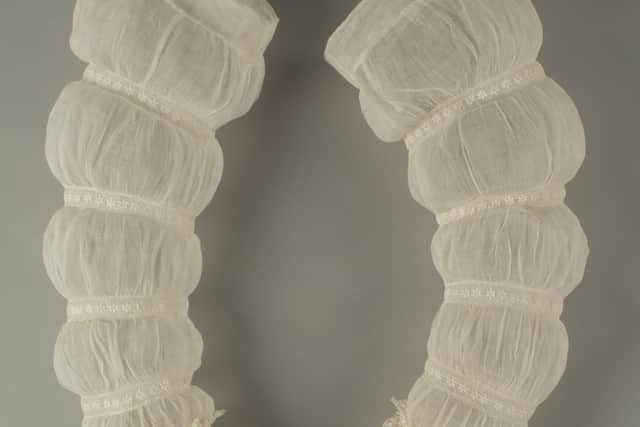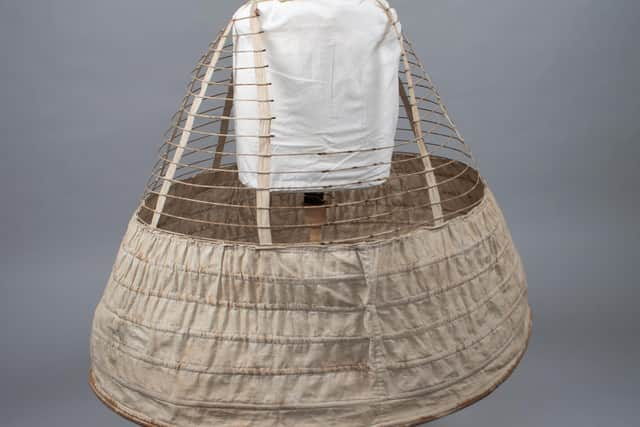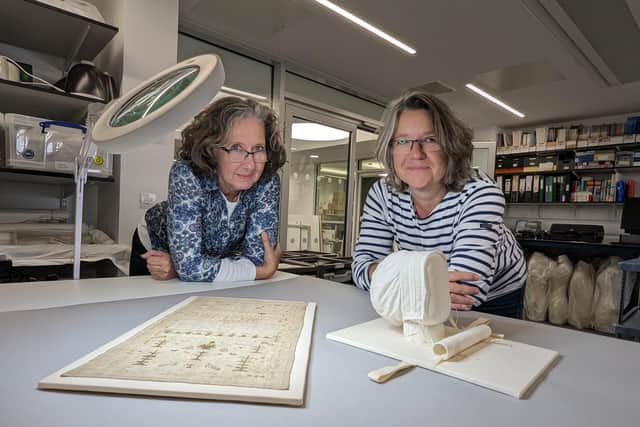Students help bring forgotten textile treasures back to life for £45m Scottish museum project
Forgotten and fragile textile treasures up to 200 years old are being brought “back to life” thanks to painstaking clean-up operations to allow them to be showcased after a £45 million heritage project is unveiled.
A new generation of expert conservators is working on a project to transform items of clothing which were previously covered in decades of dirt and soot into new star exhibits for the revamped Paisley Museum.
Advertisement
Hide AdAdvertisement
Hide AdA number of items of clothing, which were previously kept in storage facilities, have already undergone specialist work at Glasgow University, which is home to the UK's only textile conservation programme.


A child's dress and bonnet, a crinoline "cage skirt" and a knitted woollen water polo uniform are among the recently-transformed objects, which will be going on public display when the attraction reopens later this year.
The museum, which dates back to 1871 when it was gifted by industrialist Sir Peter Coats, is undergoing a radical transformation and expansion that will see twice as many objects on display as it did before work began.
Work includes the creation of a glass-covered “red drum” entrance hall, a west wing extension onto the existing Victorian building, a new cafe, courtyard and outdoor garden, and new gallery and exhibition spaces.
At the heart of the new-look museum, which has been billed as “Scotland’s biggest cultural heritage project”, will be a celebration of centuries of textile production in the town and the global reach of the “Paisley Pattern”.


Around 1,200 of the famous shawls are in Paisley’s collection, along with looms, spinning equipment, pattern and design books, and weaving technology, while its dress and textiles collection features garments, accessories and household textiles.
Student Caitlin Hartmann, who has worked on some of the pieces going on display in the museum, said: “I was phenomenally happy with the results achieved. The soiling was significantly reduced. I was grateful for the trust Paisley Museum put in me to achieve these results.”
Advertisement
Hide AdAdvertisement
Hide AdSarah Foskett, programme co-convenor at the university’s Kelvin Centre for Conservation and Cultural Heritage Research, said: “I have never seen objects clean as well in my career. There’s a lot of satisfaction that comes from that and the long-term preservation of these pieces and enabling the object to have a new lease of life.
"Textiles are really rich sources of evidence as you get a direct link to the past – people wore these pieces and they have stories.”


Fellow programme co-convenor Karen Thompson added: "By preserving these objects, it gives the opportunity for people in the future to learn from them. Conservation is about stabilising and requires a lot of decision making.
"We’re not The Repair Shop, we’re not trying to make something pristine. It’s all about the context – sometimes you don’t want to remove a stain or a mark, as that’s part of the story.”
Another of the students involved, Hannah Lacaille, said: “It’s always exciting to see evidence of use in an object because one can better imagine the lives of the people who used it. I’ll be proud to be able to say I took part in making this happen, in a way that’s safe for the object, so that it may be displayed for generations to come.”
Comments
Want to join the conversation? Please or to comment on this article.
